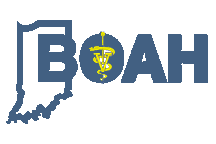Standards of Care for Livestock and Poultry
The standards of care law passed the general assembly in 2010 and took effect January 1, 2010. The standards include: the health and husbandry of livestock and poultry, farm management practices, veterinary standards & practices and the economic impact standards may have on livestock and poultry farmers, industry at large and consumers.
Standards of Care Core Principles:
Food & Water
Provide access to water that can reasonably be expected to maintain health.
Shelter
Shelter must be sufficient enough to protect the animals from the weather when it can reasonably be expected to be necessary to maintain health.
Disease, Injury & Treatment
Reasonable measures to protect from injury or disease that can reasonably be expected to seriously endanger life or health of the animals.
Animals with an injury or disease that seriously endangers the life or health of the animal must be provided with treatment or euthanized.
Animal Stewardship
Provide an environment that can reasonably be expected to maintain the health of the animal.
Handling & Transportation
Use methods and equipment that can reasonably be expected to prevent injury that would endanger the life or health of animals.
Core Principles are:
Evaluated on a veterinary basis to maintain the health of the animals.
Specific for that species, breed, sex and age. Ensuring the species is being raised using the applicable production method.
Applied only to livestock and poultry.
Applied to: the person responsible for caring for livestock or poultry, the person who has custody of the animal and the person who has immediate charge and control of the animal with implicit responsibility for protection and care.
Applicability
Standards of care are not violated if: failure of standards is due to an act of nature, such as a natural disaster or if care is provided or withheld in a manner prescribed by a veterinarian.
Implementation
BOAH veterinarians do investigate credible complaints. In investigations the health of the animals is evaluated and a report of the findings is created. BOAH will not seize animals for violations, only local law enforcement has jurisdiction to remove animals.
Potential Investigation Outcomes
Either no violation is issued or a notice of violation issued to the animal owner/caregiver. When a notice of violation is issued the animal owner/caregiver has an opportunity to correct the violation. Then a follow-up inspection is done by BOAH. Failure to correct a violation could lead to: a warning letter, an administrative order, an order to correct violation and/or a monetary penalty is possible. The animal owner/caregiver has an opportunity to appeal a notice of violation by having a meeting with the State Veterinarian and by writing a formal appeal to the Board of Animal Health (BOAH).
An investigation could lead to a court order, which means enforcement of administrative order. A violation of court order = contempt penalties.
Investigations are referred to law enforcement when: the severity rises to criminal abuse or neglect, criminal charges need to be issued, when animals need to be removed and /or when a court has ordered restrictions on contact with animals.
